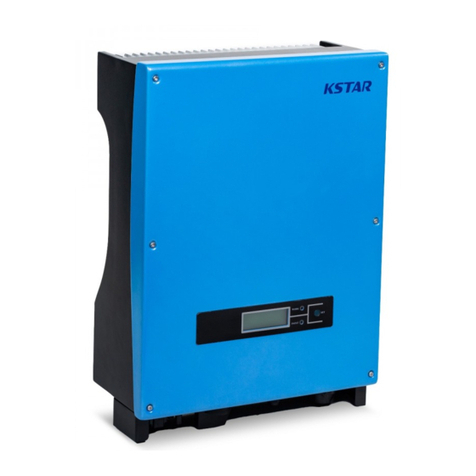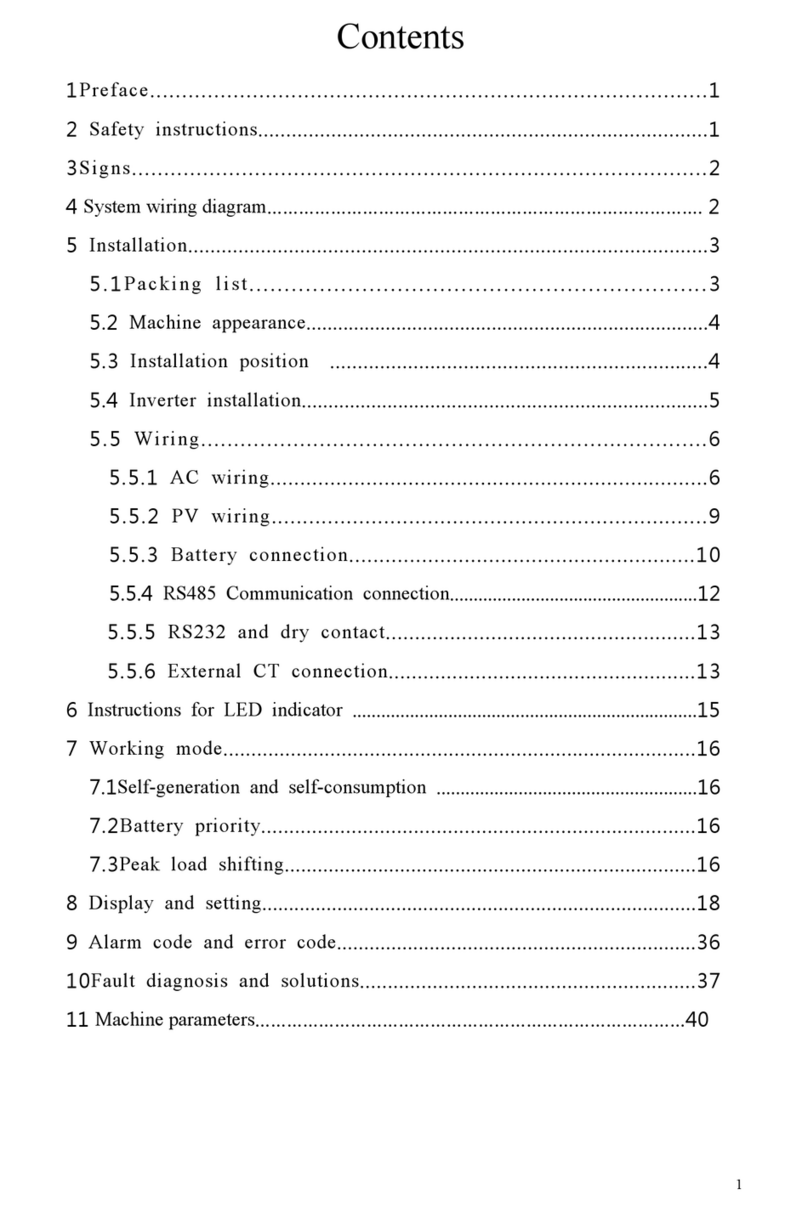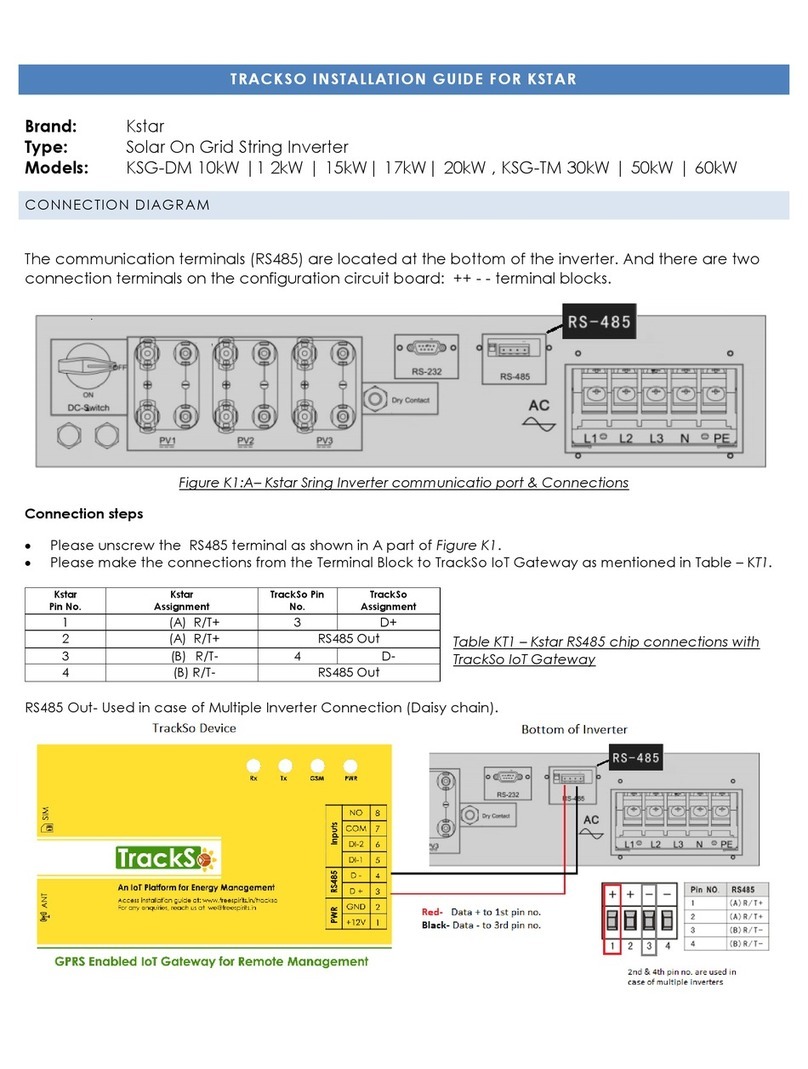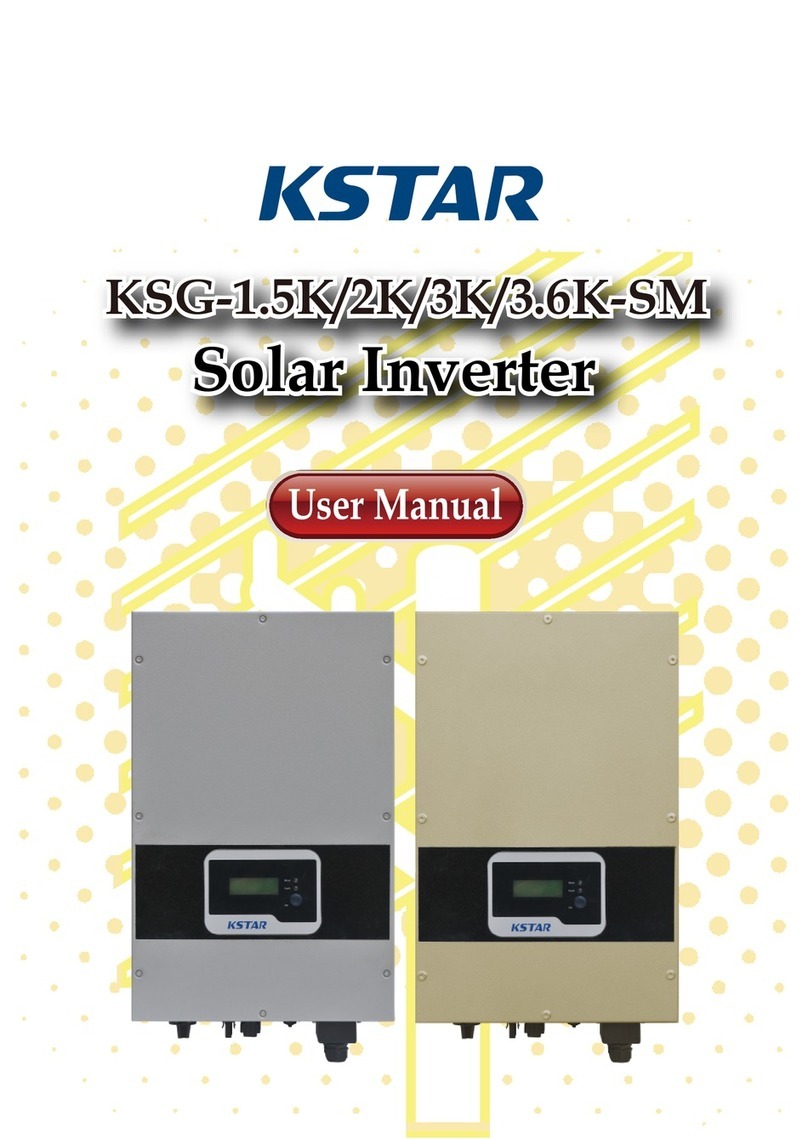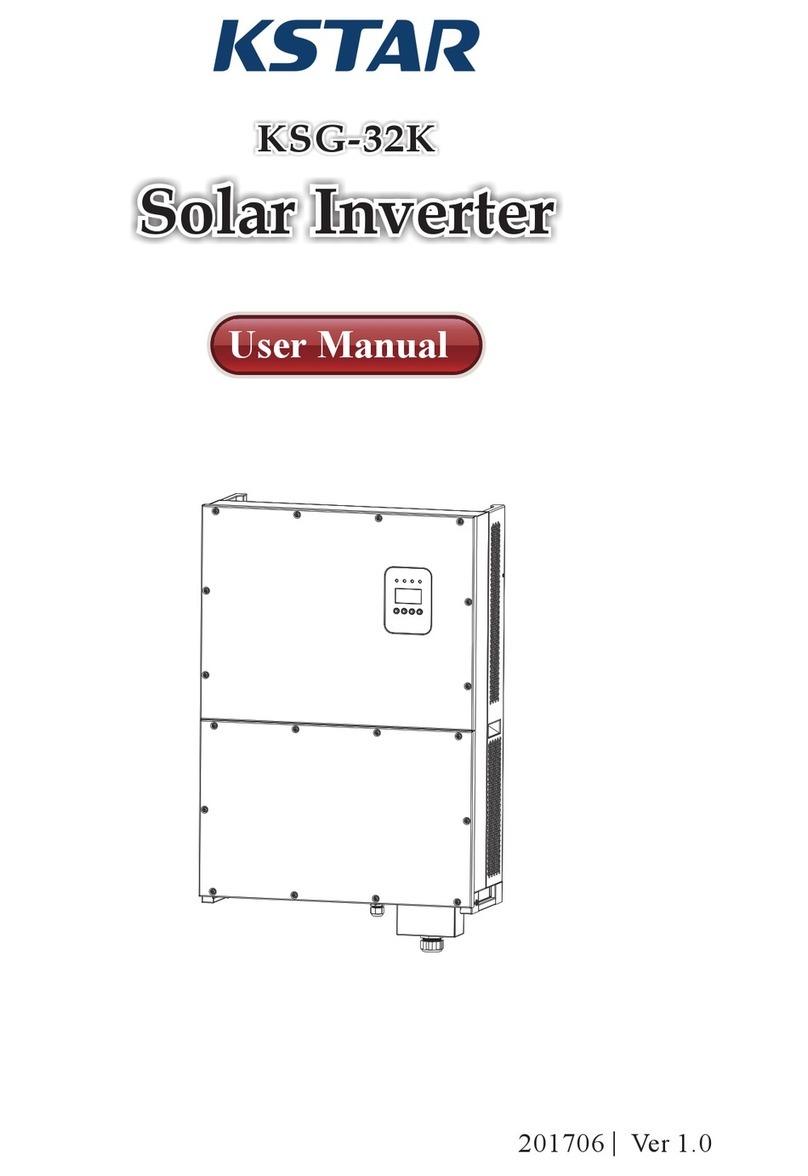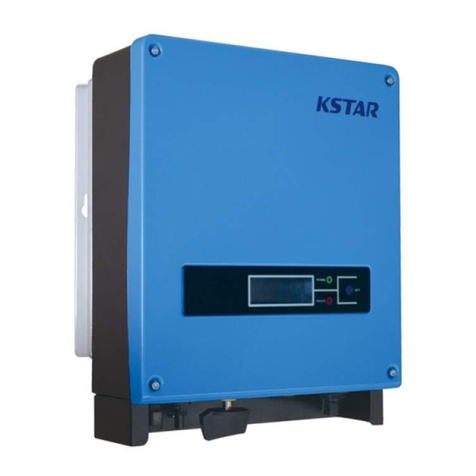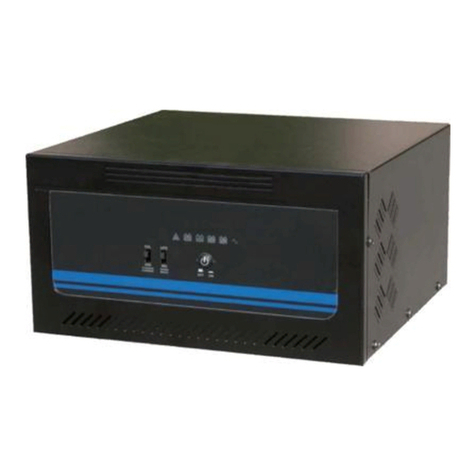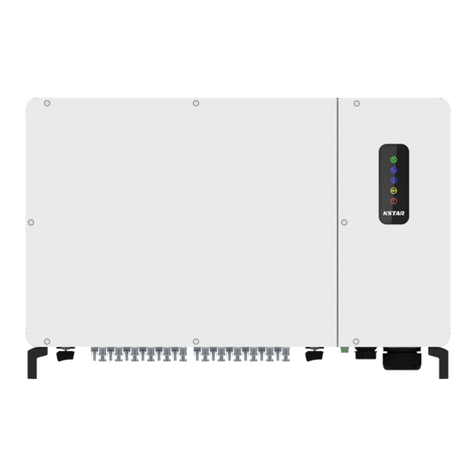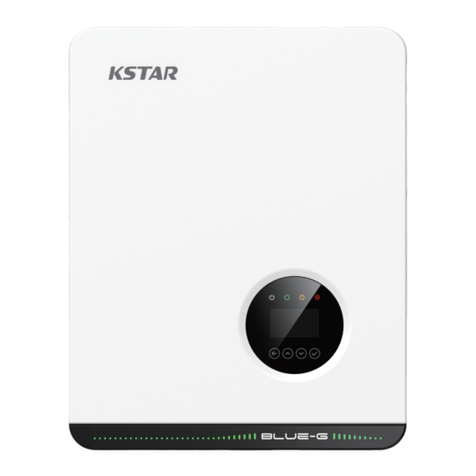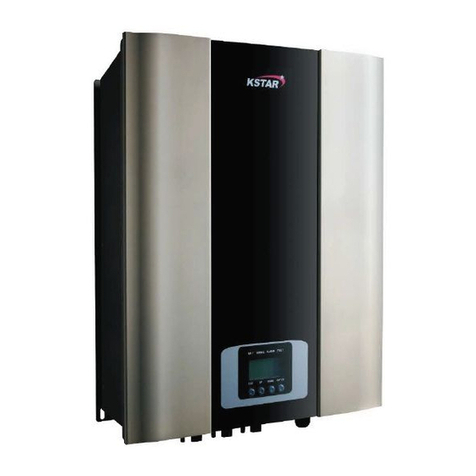Installation and Operation Manual 2
7.4.4 Working parameters............................................................ 23
7.4.4.1 Starting-up voltage....................................................... 23
7.4.4.2 Starting-up timelag ...................................................... 23
7.4.4.3 Low voltage of electric network .................................. 24
7.4.4.4 High voltage of electric network ................................. 24
7.4.4.5 Low frequency of electric network................................24
7.4.4.6 High frequency of electric network..............................25
7.4.4.7 Please starting-up again ................................................25
7.4.5 485 address..........................................................................25
7.4.6 485 baudrate........................................................................26
7.4.7 485 protocol........................................................................26
7.4.8 Display language .................................................................26
7.4.9 LCD backlight..................................................................... 27
7.4.10 Date/time...........................................................................27
7.4.11 History clearing.................................................................27
7.4.12 Password setting................................................................28
7.4.13 Maintenance................................................................28
7.4.14 Factory Reset..............................................................28
7.5 Inquiry ........................................................................................29
7.5.1 INV MODEL.......................................................................29
7.5.2 MODEL SN.........................................................................29
7.5.3 Firmware..............................................................................30
7.5.4 RECORD.............................................................................30
7.6 Statistics .................................................................................... 31
7.6.1 ime statistics......................................................................31
7.6.2 imes of paralleling in.........................................................32
7.6.3 Power peak..........................................................................32
7.6.4 Generated energy of that day...............................................32
7.6.5 Generated energy of that week............................................32
7.6.6 Generated energy of that month..........................................33
7.6.7 Generated energy of that year..............................................33
